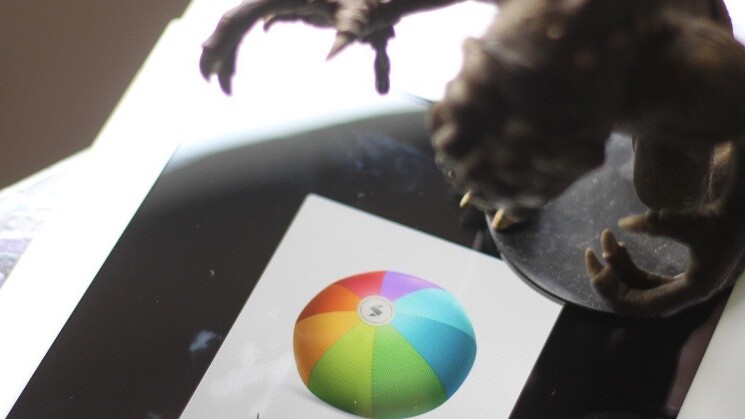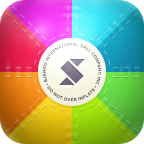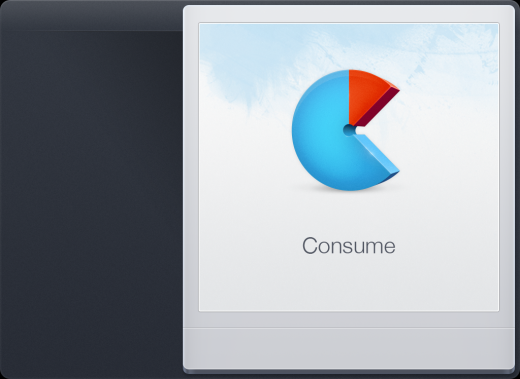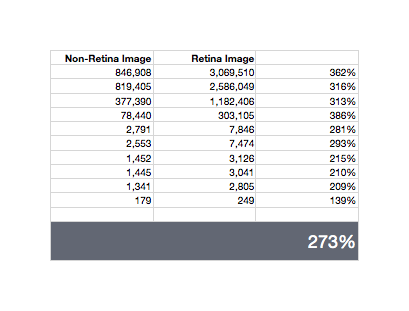
Apple’s iPad 3 is set to launch next week and all signs point to it having a Retina display running at 2048×1536 pixels. This should provide a clearer, sharper image to most users and will display many applications in a fantastic new light, as long as developers have prepared them properly.
But the necessity to include these images may present a problem with the mandatory 20MB file size limit that Apple has imposed on 3G downloads.
In order to do so, they will have to include ‘@2x’ graphics. These are image files that have been quadrupled in pixel count in order to display properly on the newer double-resolution iPad 3 screen. If these images were not included, then many of the apps that use custom graphics, like Tweetbot, or Bjango’s Consume 2, would look ‘blurrier’ than they do on the iPad 2.
That’s not a huge problem for most developers, as many have actually begun to produce these higher resolution images already, from their original assets. The issue comes when they begin to include them into the apps that they submit to the App Store.
Due to the sizes of the images, apps that use custom graphics could double in size, pushing many that are just under Apple’s 20MB download limit for 3G connections right over the top.
To give you an idea, we asked Bjango’s Marc Edwards about how the new Retina graphics would affect the size of one of its latest apps, Consume. He gave us these statistics regarding the app’s packages:
- iPhone (Retina and non-Retina), iPad (non-Retina) = 18.3MB
- iPhone (Retina and non-Retina), iPad (Retina and non-Retina) = ~35MB
If, by the way, you’re a developer looking to work with Retina assets now, check out Bjango’s Skala Preview, which has support for a 200% draw size, letting you view Retina images on a non-retina device. The app’s icon demonstrates the relative size difference well:


We couldn’t even upload the default loading image of Consume into WordPress because it is too large. You can download it here and the ‘regular’ non-Retina version of it here if you’d like to compare the sizes yourself.
This causes a problem mostly for universal apps that are offered as a single download for both iPhone and iPad. See, on an iPhone the impact of the casual downloader, who sees an app and has to have it right then, cannot be discounted. These users probably grab the majority of their apps over their 3G connection on an impulse.
In order for them to do this, the apps must come in under the 20MB limit that Apple imposes on apps. Otherwise they face a loss in downloads that many developers say could be significant. Most do everything in their power to come in under that limit if at all possible.
Not every app will be affected by this, obviously. Some simply won’t go over the limit at all due to to their use of mostly standard Apple interface elements and some offer their apps as separate downloads for iPhone and iPad. Only the iPad versions would be affected by the size increase and the iPhone clients would not take the ‘impulse download’ hit in popularity.
Tapbots developer Paul Haddad — who sparked a lot of discussion about the issue on Twitter today — says that it is lucky, because its popular Twitter client Tweetbot for iPad will be well over the 20MB limit, but the iPhone client is offered as a separate download. It is already Retina-ready, obviously, and will not go over the limit as they will not have to include the larger graphics.
But those who offer universal apps, this could be a sticky issue. If they want to retain those impulse downloads and not limit users to a WiFi download only, they might have to split their apps into two binaries, one explicitly for the iPhone and one for the iPad, where the cell network impulse buy isn’t a major factor.
Historically, the 20MB limit was actually an increase from the original 10MB size that Apple had imposed ostensibly due to pressure from then-exclusive partner AT&T. It was increased in February of 2010 just after the original iPad was announced.
So there is always a possibility that Apple may increase the 3G download cap around the time it introduces the iPad 3 next week. But, according to some basic data from Edwards, the cap would need to be increased by somewhere around 273%, not just double. That would put it somewhere around 60MB, if we’re rounding.
So, there is definitely some food for thought for developers here and a couple of looming questions. Will they split their universal binaries to keep the impulse buyer downloads, or bite the bullet and hope that Apple increases the cap up to 60MB? Or will they attempt to winnow down the size of their apps by tweaking existing assets or removing them? It could mean the difference between a successful launch and not for many, especially those who have apps that rely on custom graphics.
With AT&T aggressively throttling presumably ‘unlimited’ customers and increasing their data download rates all the time, it’s unlikely that they would like a cap increase much. But, now that Apple is on three major carriers in the US and hundreds more worldwide, isn’t it time it used its leverage to get the limit bumped up yet again?
This issue should be an interesting one to watch.
Keep up with all the latest Apple news at TNW Apple.
Get the TNW newsletter
Get the most important tech news in your inbox each week.







